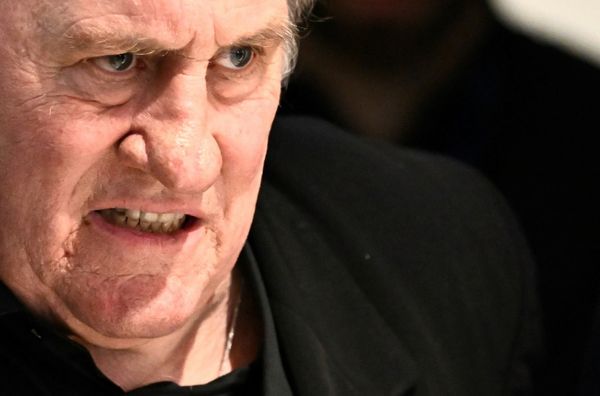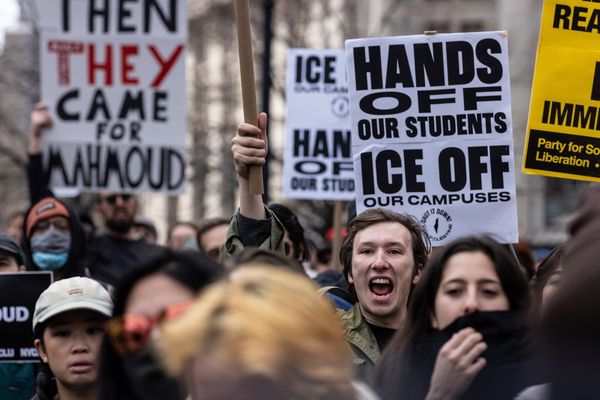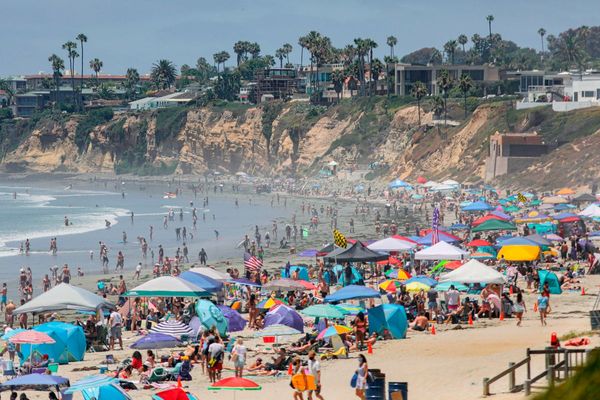In the Daintree rainforest, cassowaries raise their chicks above the thick detritus of the forest floor.
Elusive Bennett's tree-kangaroos make their homes in the canopies above, while crocodiles lie in wait in the estuaries and rivers that push into the forest from the Coral Sea.
Home to an assembly of flora and fauna not found anywhere else on Earth and fringed in the east by a coral reef, the Daintree in far north Queensland is believed to be the oldest continual patch of tropical rainforest in the world, with some of its plants dating back to the earliest-known flowering plants, more than 110 million years ago.
In 1988, after years of clashes between conservationists, police and developers, and in recognition of its unique and irreplaceable ecosystems, the Daintree was given World Heritage status, largely putting an end to logging and broadscale clearing.
For many who had taken up the fight against the bulldozers in the early 80s, this was the culmination of years of struggle.
And for those of us who have visited the Daintree since or admired it from afar, we'd be forgiven for thinking the conflict stopped there.
But wheels set in motion by the Joh Bjelke-Petersen government in the 80s mean parts of the Daintree are still being sold off privately today.
Conservationists are racing to buy the blocks to guarantee they can't be developed.
But some locals say that's damaging their small community, and that they're having their lives dictated by people in cities far away.
Bjelke-Petersen didn't want to 'leave it for hippies'
Driving a vehicle off the ferry onto the northern bank of the Daintree River, the patchy farmland of the south is replaced by lush, verdant forest.
It's here that many people think the Daintree wilderness begins, says Kelvin Davies.
Mr Davies heads up Rainforest 4: one of several conservation groups raising money to try to stop the Daintree from being cleared.
In 1982, the Bjelke-Petersen government backed the development of a subdivision of rural, residential land in the south-eastern Daintree.
Mr Bjelke-Petersen, an outspoken critic of the conservation movement, said at the time that his government wanted people to go and see the area.
The subdivision went ahead despite protests, Mr Davies says.
"They created 50 kilometres of road and the subdivision was created. It was 1,137 blocks that were carved up."
Many of those blocks were subsequently bought back by the Douglas Shire Council and under the Daintree Rescue Package: $23 million over three years provided by the federal and Queensland governments from 1994 to help protect the region.
But living in the Daintree is hard — it can rain up to nine months of the year, and can be bone dry at other times.
Many buyers bought but never developed. Others managed to clear a house pad or build a shed, but not much else.
Since then, there has been a slow but steady trickle of the blocks back onto the market, being bought by both conservationists and private buyers.
Rainforest 4, run from northern New South Wales by Mr Davies, has managed to raise enough funds to purchase 16 of the blocks in the past two years. And they're currently raising money for three more under contract.
But COVID has seen a surge in southern investors outbidding them on the market, he says.
"There's been an enormous amount of people rushing up to the Daintree at the moment to buy these blocks," Mr Davies says.
"We're raising money, so it does take us a few months to buy the blocks, and if someone's got cash, they can out-compete us."
When Rainforest 4 did a study last year, they identified 207 blocks that still hadn't been developed.
"It's probably been reduced down to 190 with the buyback and others being cleared for development," Mr Davies says.
They're aiming to raise money to buy as many, if not all the remaining blocks, and to hand them back to the Eastern Kuku Yalanji traditional owners.
HalfCut raises funds for buyback
Rainforest 4 haven't been raising money alone.
After fundraising for various rainforest and conservation charities over the past decade, James Stanton-Cooke and his partner Jess Clarke started their organisation HalfCut in 2017.
As the name suggests, every August Jimmy HalfCut, as he's also known, and Jess raise money by joining with volunteers to shave, plait, dye, or follically alter anything from an eyebrow to half their body hair.
"The best we've seen is one bloke shaved right down half his chest, then got in the budgie smugglers and mowed half the lawn," Mr Stanton-Cooke says.
In 2020, HalfCut were able to raise more than $360,000 for Rainforest 4, and in 2021, it's skyrocketed to just shy of $1 million.
The fact that Rainforest 4 are handing the land back to Indigenous ownership is important to Mr Stanton-Cooke.
"Our question from here is, 'How do we get the rest of the Daintree back?' I think we can do it in seven years," he says.
Lyn Johnson is a Jalunji woman and chairperson of the Jabalbina Aboriginal Corporation, which manages the native title of the Eastern Kuku Yalanji people.
And she's a big fan of the work of HalfCut and Rainforest 4.
"There were two blocks, that was the initial [buyback], then it's gone from there … it's just multiplied," she says.
"Jimmy HalfCut and Kelvin and all the donors — they're the ones with the big hearts and we love them all, and they’ve got the heart of the Daintree with them that they love.
"I'm always surprised that people are so generous and without them, it wouldn't be possible."
After the momentous handback of the Daintree to the Eastern Kuku Yalanji traditional owners in a ceremony in September, Ms Johnson says they're still working through the details of how the buybacks will be incorporated into their management.
"There are a lot of special spots — some of those properties are for kurranji, which is our cassowary — so they get handed back to us, but also QPWS (Queensland Parks and Wildlife Service)."
"So we'll be co-managing with them in the future."
Locals unhappy about being told 'how they're allowed to live'
But not everyone is happy with how the conservation groups have been going about buying back the land.
Lawrence Mason is a cafe owner who runs tours around Cape Tribulation. He says he's fine with groups buying back land that would have been conserved anyway, but rehabilitating developed blocks for conservation threatens the community.
"[Conservation groups] have written that on their Facebook page, that they want to buy back all the land in the Daintree. Well, my daughter is fourth generation and I wouldn't want that to happen," Mr Mason says.
"We've seen the school since my daughter's been there drop from 40 people to, I think it's 26.
"It gives the government excuses to provide the community with less funding — less funding for the school and medical support."
Mr Mason says conservation groups are regularly changing their names, making it difficult to keep up with who's who. And he's seen little evidence of what is being done with the blocks after they've raised enough money to buy them.
The community is being hit from two sides, Mr Mason says. On the other, the influx of short-term rentals like AirBnB is squeezing the availability of housing for would-be residents.
"I would estimate that about 40 per cent of houses north of the river are now short-term accommodation. It's taking away from the community," Mr Mason says.
He says conservation groups like Rainforest 4 haven't properly consulted with the community, leaving some locals suspicious and fearful of what they're doing.
Another local business owner, Jeremy Blockey,, has similar concerns. Again, he says he's broadly supportive of setting aside more land for conservation.
There is no mains power north of the river, but Mr Blockey says conservation groups play on people's fears whenever there is talk of building a bridge over the river, or upgrading the electricity infrastructure.
"The broader green movement would have you think it's best to buy everyone up and move everyone out.
"People in Sydney and Melbourne, or London for that matter, people funding these things probably don't really care [about the community].
"Some locals can get a bit miffed about people who don't live here telling locals how they're allowed to live here. That's offensive."
Mr Mason says fears that the Daintree is under threat are misguided.
"I'm very sceptical about these people spending time online spouting rubbish about cassowaries going extinct. You just have to have a look on Google Earth to show there's more vegetation here than there was 20 years ago."
Development would 'change the face of the Daintree'
The federal government projected in its 2021 budget that it would commit $19 million by 2024 to help build a microgrid north of the river.
Local Mike Berwick, who has a long involvement with conservation in the Daintree, says the government needs to invest in restoring the Daintree, not in its development, and to empower the local community to do the same.
"We have the Australian government that once used its powers to protect this area, now promoting its development — 'let's get a road through the place as a short route to Cooktown', 'let's put the power on'.
As mayor of the Douglas Shire, Mr Berwick was instrumental in the buyback of blocks that were considered of high conservation value.
He was also one of the people standing in front of the bulldozers when they arrived to push the coastal road through the Daintree in 1983 and '84.
But Mr Berwick says despite some of the wins for conservation in the region, we can't afford to sleep on protecting places like the Daintree.
"All that being said, the more they buy back, the better I think.







